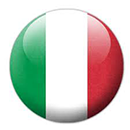|
Piazza dello Spirito Santo |



|
Piazza dello Spirito Santo: A Jesuit church and monastery were built on this site in the 17th century and the square was enlarged in the following century, with an entire block of houses demolished to make way for the parvis, the open space in front of the church. A number of ancient noble palaces also stand in the square and in 1939 the monument to Cardinal Niccolò Forteguerri was brought here from its previous location in Piazza del Duomo. This work, by Cesare Sighinolfi (1863), was made using a sizeable bequest made by Niccolò Puccini. In the 20th century the square, which had already been used by street traders in the 19th century, came to be used more specifically as a shoe market, held in conjunction with the nearby markets in Piazza del Duomo and Piazza della Sala. |
|
Church of the Holy Spirit: This building, designed by Jesuit architect Tommaso Ramignani, was begun in 1647 and consecrated in 1685. Originally dedicated to Saint Ignatius of Loyola and owned by the Jesuits until the order was abolished, it was taken over by the Congregation of the Holy Spirit in 1773. The interior is organised as a simple, single nave in keeping with the sober stylistic principles for the order’s churches, with four side chapels decorated with 17th- and 18th-century canvases; on the left-hand wall is the monumental organ by Flemish organ builder Willem Hermans (1664), richly carved and decorated in gold leaf. The high altar, clad entirely in polychrome marble and built for the church’s main patrons, the Rospigliosi family, was designed by Gian Lorenzo Bernini and contains The Apparition of Christ to St. Ignatius by Pietro Berrettini da Cortona (1668). For many years the church remained in a state of bad repair made worse by structural problems, but was eventually restored and reopened in 1988. |
|
Palazzo Rospigliosi Pallavicini: Originally owned by the Ammannati family - who ran their bank from here until it collapsed in the 1300s due to the insolvency of Pope Benedict XI and the King of England - this palace subsequently passed into the the hands of the family of 40 Pope Clement the IX Rospigliosi. The building, which comprises two blocks erected in two distinct periods (13th-14th and 16th-17th centuries), includes a 17th-century chapel with frescoes by Giovanni da San Giovanni (1633) depicting Scenes from the Life of St. Catherine of Alexandria, in honour of Caterina Rospigliosi, the pope's mother. |


| CNA Pistoia - Impresa+s.coop. Realizzato da SIS Informatica. |